How Long Can Apple's Vision Pro Thrive? Cook May Pivot to Smart Glasses, with Next-Gen Debuting by Year's End
![]() 05/08 2025
05/08 2025
![]() 612
612
Apple's Vision Pro was unveiled in 2023 and hit the shelves in 2024, and now the spotlight shifts to its successor. In this edition of Sharp Review, we delve into this topic.
Current Status of Vision Pro
Apple officially launched Vision Pro at WWDC 2023, equipped with M2 and R1 chips, boasting dual 8K Micro OLED screens with 23 million pixels, a built-in 3D camera for depth photos and videos, 12 sensors, 5 cameras, and 6 microphones. Users can control it via gestures, eye tracking, or voice commands. Preinstalled with visionOS, it caters to work, entertainment, and communication needs. Weighing between 600g and 650g, Vision Pro starts at $3499.
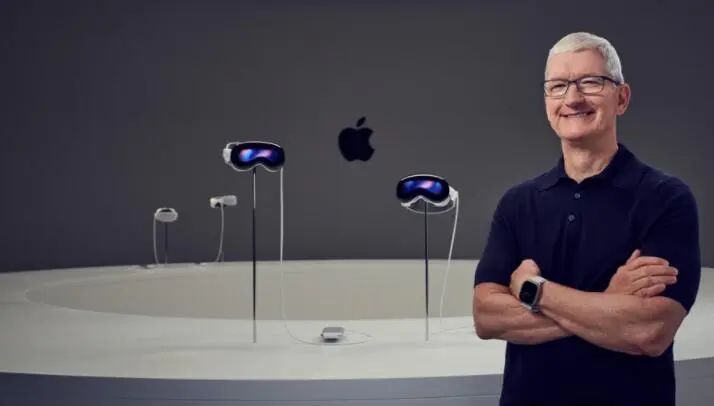
Apple CEO Tim Cook commented:
"The introduction of Vision Pro heralds a new era in computing. Just as the Mac ushered in personal computing and the iPhone mobile computing, Vision Pro will lead us into the era of spatial computing. Built on Apple's decades of innovation, Vision Pro is a groundbreaking innovation, offering a revolutionary input system and thousands of cutting-edge technologies. It provides users with an exceptional experience and presents exciting new opportunities for developers."
Despite Cook's praise, Vision Pro's current status is mixed:
Good News: Vision Pro continues to benefit from Apple's brand appeal. A TrendForce report in December 2024 predicts VR/MR headset shipments to reach 9.6 million units, an 8.8% annual increase. Meta's Quest series accounted for 73% of shipments, with the $299 Quest 3S as the primary driver, up 11% annually. Sony's PlayStation VR2 (PS VR2) maintained second place with a 9% market share (launch price: $549). Vision Pro, launched in 2024 at $3499, secured third place with a 5% market share.
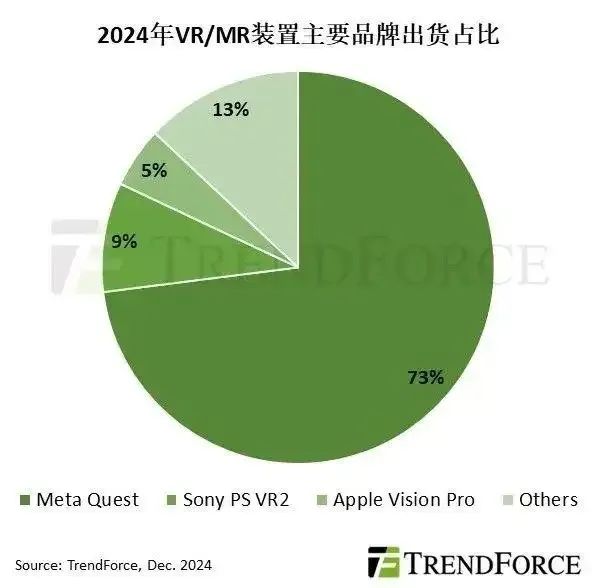
An IDC report on the global AR/VR headset market in 2024 shows Meta with a 74.6% market share, followed by Apple with 5.2%, Sony and ByteDance with 4.3% and 4.1% respectively, and XREAL ranking fifth with 3.3%. Vision Pro's shipments surpassed those of other VR/MR manufacturers except Meta and Sony. Cook positions Vision Pro as a niche market product, yet its shipments exceed mass-market offerings from PICO and DPVR, reflecting Apple's brand power and strong ecosystem.
Concerning Aspect: Vision Pro lacks developer interest and killer apps. Apple's marketing chief Greg Joswiak states that Vision Pro has over 1000 native visionOS apps and compatibility with 1.5 million iOS and iPad apps, but few have gained popularity.
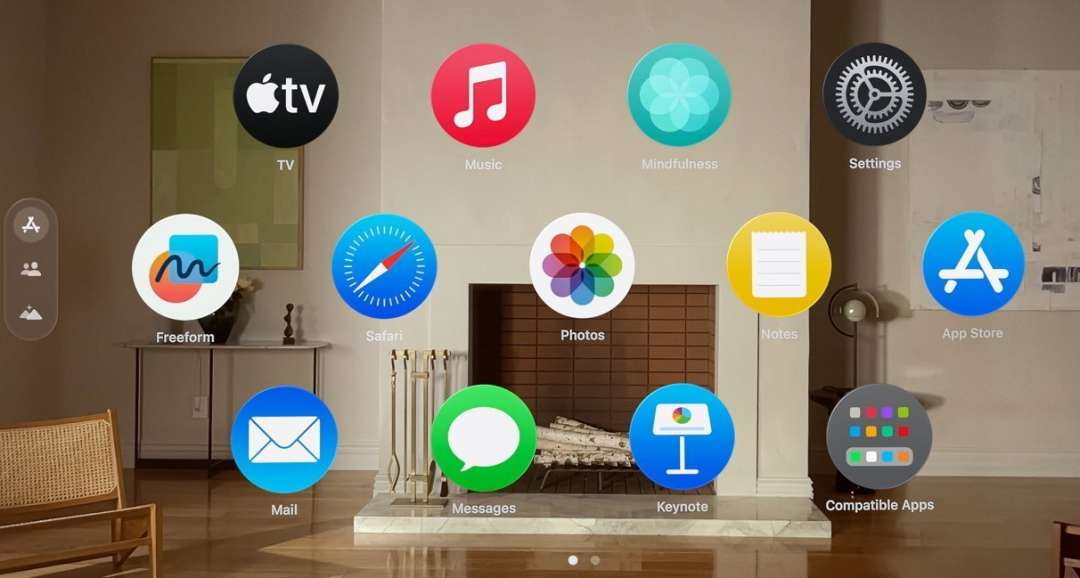
Developer enthusiasm for Vision Pro apps is waning. Appfigures data shows that in September 2024, the Vision Pro App Store launched only 10 apps, significantly fewer than the hundreds released in the two months before its launch.
A GDC survey on the gaming industry in January 2025 revealed developers' top five platforms of interest: Meta Quest (63%), SteamVR (45%), Apple Vision Pro (26%), Sony PSVR 1/2 (25%), and Apple ARKit (12%). While 26% are interested in Vision Pro, only 8% are developing for Apple's "spatial computer." It's no surprise that Cook cites solving the ecosystem issue, particularly developer engagement, as Vision Pro's biggest challenge.
Understanding Vision Pro's current status clarifies Apple's product roadmap for spatial computing devices.
Apple's Spatial Computing Device Product Planning
As we enter 2025, Apple's spatial computing roadmap emerges:
Software Ecosystem Priority: In March 2025, Bloomberg reported significant changes to iOS 19, iPadOS 19, macOS 16, and other interfaces, gradually unifying them into the visionOS style for a consistent cross-device experience. This unification will help users adapt to visionOS-style Apple devices, laying a solid foundation for future Vision Pro successors.
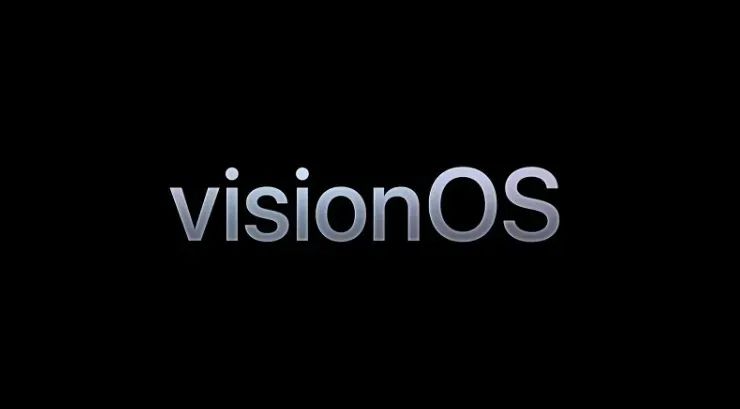
With a large user base and unified visionOS style, developer enthusiasm can be galvanized. Developers can create one visionOS UI that adapts to all Apple devices, reducing costs and complexities, attracting more developers to Apple's app ecosystem, and enriching app variety and quantity.
Apple is also collaborating with third parties. According to appleinsider, visionOS engineers aim to provide native platform support for the Godot engine, enabling developers to create immersive Vision Pro content using Godot.
Addressing Vision Pro's ecosystem issues will be a long-term endeavor.
Hardware Takes a Back Seat: In late March 2025, Apple transferred Mike Rockwell, the "father of Vision Pro," to Siri development, followed by key Vision Pro R&D team members. With the Vision Pro team focused on Siri, progress on Apple's next-generation spatial computing device will undoubtedly be impacted.

Also in late March, Bloomberg reported that plans for the next-generation Apple spatial computing device, including Vision Pro upgrades and budget models, are still fluid. Work is ongoing but not at full speed, suggesting the next-generation device is still far off. It appears to have low priority within Apple, extending the lifecycle of the 2023 Vision Pro.
Final Thoughts
Apple's stance on the Vision Pro successor remains unclear, leading to conflicting media reports.
In early April 2025, domestic media reported that Apple's second-generation XR headset (or Vision Pro 2) had entered mass production, expected to release within the year. Key components like panels and casings are already in production, with Lens Technology supplying the glass panel, Changying Precision the casing, and electronic component suppliers rushing orders.
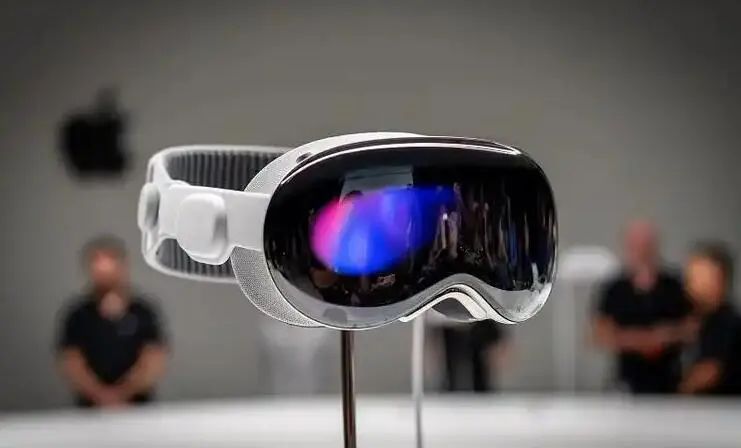
By late April, Bloomberg reported that Apple is fully developing a lighter Vision model, expected to debut by late 2025 or early 2026. Its positioning is yet to be finalized, potentially as Vision Pro 2 or a budget version.
As Apple CEO Tim Cook, I would prioritize smart glasses development, not letting Zuckerberg gain too much of a lead. For spatial computing, I would focus on enhancing the visionOS ecosystem this year and next, launching the next-generation Vision Pro the following year.
Written by Doflamingo
(All images in this article are sourced from the internet)





